For years I have marvelled at the sight of flame-red tulips returning faithfully each March right at the edge of the sea cliff my hideous block of flats is built on. Who planted these tulips here? I’ve asked my neighbours and tried to trace the history of the place, but never got anywhere with my investigation. A mysterious colony of tall red tulips, a huge group numbering a good 100 or so, grows perilously close to the water’s edge yet is able to multiply and return each year despite being mercilessly exposed to the unforgiving salty spray of the North Aegean. For a coastal location that is hardly favourable to tulip cultivation, seeing these tulips emerge each year is quite a sight to behold. But it also presents a tantalising mystery: I live in hardiness zone 8b, which lies just outside the liveable temperature range for the vast majority of hybridized, garden-variety tulips like this one. What is this tulip doing here, outside of its habitable zone?
The magic tulip patch is cleverly hidden right under a 2,500 year-old Ancient Greek fortress wall that trails the cliff’s edge, which is the only visible remnant of the old Athenian colony of Antisara. But unless passers-by have a good reason to look down from the wall, they will surely miss the magnificent scarlet tulip blossoms rising up against the horizon of the chilly early-spring Aegean. The unique spectacle, which only lasts about three weeks, is as safe as ever from being discovered, and I know because no one in the neighbourhood has ever noticed the tulips but me. Humans today never look around when they walk, let alone pause to escape their brain. They only know how to travel from point A to point Z, missing everything in between. While the vast majority of modern humans suffer from complete “plant blindness”, to me this is indicative of a much more serious condition: the death of the conscious self - that is, the inability to be aware of, process, and immerse oneself in reality.
Another big reason why the tulip patch has survived is that it is protected from trespassers by the biggest thug: nasty prickly pear cactus, scientific name Opuntia, an invasive plant that has devastated all of the Mediterranean ever since Christopher Columbus brought it back from the Americas to Spain in the late 15th century. Its tiny thorn needles are so thin they are invisible to the naked eye, and can stay with you for weeks: lingering in your skin and on your clothes from where they launch continuous fresh attacks to make sure you are so traumatized from the ordeal that you promise yourself to never, ever again dare get more than 1 foot close to a prickly pear cactus (so I’ve heard from someone vividly describing their experience).
The “soil” the tulips grow on is also very interesting. It consists of unused cement powder, sharp broken ceramic tiles, plastic piping, garbage and all kinds of left-over construction materials people threw over the cliff when they were done building their homes decades ago. This toxic debris pile that adorns the bottom of the 2,500 year-old ancient Greek wall has over time been filled in and layered by falling leaves and other organic material, so it eventually became a perfect habitat for flower bulbs: lots of nutrition, and impeccable drainage.
As a final discouragement towards any trespassers who may entertain the thought of leaping over the wall and cutting a tulip to take home and stick in a vase, the unstable ground the tulip patch rests on is set on a 45-degree incline that very quickly leads to a 15 metre-deep murderous death drop right to the bottom of the cliff. There, a solid bank of sun-kissed, ocean-licked corrugated grey granite rock eagerly awaits to split brains open any time of the day: an exciting departure from its monotonous existence, while simultaneously awarding Greece its own version of the Edelweiss fable. Disappointingly for the victims-to-be, the sea lies a further 5 metres ahead from the rocks.
Suffering from a bad case of tulip mania since early childhood, I set myself the mission to find out what this mystery tulip was that can thrive in my climate. It’s just too warm for most tulips where I live, and thanks to the climate crisis I trust that the hardiness zone maps on the web are probably already outdated. As the planet heats up, my real hardiness zone by now is probably not 8b, but easily a solid 9.
On top of that, modern tulips have gone through so much genetic alteration by humans to look good on the outside that, they’ve been robbed of much of their reproductive capability, vigour and disease resistance. Like humans, commercially-grown tulips are so domesticated that they can no longer survive outside of the tightly controlled, pre-programmed growing conditions of industrial-sized farms. Weakened to the point where they’ve become extremely susceptible to pests and diseases compared to their wild ancestors, modern tulips have closely followed the fate of their human creators: they have been bred to look pretty for long enough to be sold and put in a vase for a few days, but not to survive in the wilderness.
You see, it’s not about them anymore. The tulip farm doesn’t care about the tulips themselves, in much the same way that the human farm of capitalism doesn’t care about humans. It just cares about making them look sellable and profitable. The role of capitalism is to make products out of living beings whether these are tulips, cows, or humans. The better the product looks and the faster it dies, the closer it is to perfection: a consumable that is highly desirable yet completely ephemeral: you will need to replace it again, and again, and again.
This is why commercial tulip bulb growers only grow tulips that last for just one season. If they really wanted to, they could have created tulips that are both visually appealing and healthy. These tulips would live in people’s gardens for many years and have no need for fertilisers and pesticides, just like their wild ancestors. But this would drive the tulip farm to bankruptcy.
Both tulips and humans are victims of extreme domestication. They are becoming so genetically weak that they can only thrive and produce new offspring within the artificial conditions created and controlled by the capitalist farm. They depend on the farm for all their water, food, artificial feed, fungicides, chemicals and all kinds of “healthcare” necessary to keep them alive in the toxic system they’ve been bred in. One of my biology professors in college one time asked the class a question: “what do you think is the biggest threat to natural selection and human evolution?”. Not one student in an entire amphitheatre raised their hand. The answer came from the teacher: “Medicine”. The more engineered, artificial and life-supported human life becomes the more we fade away as a species, much like commercial tulip cultivars.
Like all gardeners, I’ve had my share of disappointments attempting to grow industrially bred tulips in my garden only to find that they are so far from a natural tulip that they fail to adapt to the unpredictable conditions of a garden exposed to the elements. We have messed up their genes too much.
Except for this mystery tulip, I guess. A few hours of internet searching and the mystery begins to unravel, but as it does, it throws new twists and enigmas. Genetic analyses show that this tulip, which is found growing wild in multiple locations in Greece, Turkey, Italy and Southern France, is not related to any known wild species, yet is not part of a known hybridized tulip lineage either: there are no records of its creation through a specific breeding program. This is unusual, as all human-created tulips have extensive breeding records proudly attributed to a place and the human who played God as they crossed different tulips to create them. The oldest record of the tulip I can find is in 1822, by the Italian botanist who first found it already growing in the wild and gave it his name: Giuseppe Raddi.
I trawl the web for more information, but there’s nothing. Everything stops in 1822, a good two hundred years after Tulip Mania had already collapsed the Dutch economy. Even though this time period is well within historical breeding records, there is no archive of the tulip’s creation. Most websites list the tulip as “unclassifiable”: meaning it cannot be accepted as a wild species because it simply isn’t, but neither as a human-made cultivar because human-made cultivars are so genetically weakened they can’t possibly survive in the wild. They’ll be lucky at best if they manage to reproduce outside the tulip farm for more than a few generations, often producing progeny that are even weaker than their parents.
At least this is what scientists thought until recently, when more mysterious cases of “unclassifiable” tulips began to emerge, particularly in France. It is now believed that these “unclassifiable” tulips that include my own Tulipa raddii, are the descendants of brave “rebel hybrid tulips” that managed the unthinkable: they dared to escape the tulip farms hundreds of years ago and somehow survived in the wild despite all the breeding they had been subjected to. Not only that, but they thrived and became the only known large-flowered tulips to be able to grow comfortably above hardiness zone 8.
It is believed that hundreds of years ago, and probably even before the main period of Tulip Mania, the rebel tulips took whatever mangled genes they had left in them and set out into the cruel, unpredictable yet free world: the ecosystem. Somehow, perhaps by cross-breeding with wild tulips or through mutation, they became fully “naturalised” - a biology term which refers to an organism that can reproduce in a new environment but more crucially, produce genetically stable progeny: the children look like their parents, much like in a normal species. The hybrid tulips had overcome centuries of human genetic mutilation and become a new species all to themselves.
This is such an astonishing feat for a complex organism that scientists still don’t know how exactly the tulips did it. Tulipa raddii and its fellow runaways have for now been given their own classification by biologists, given their unique history: they belong in a new class of tulips called “neotulips”: tulips that humans tried to genetically play with so they can turn them into products for sale, but who resisted, fought back, and won their independence. The fact sheet for Tulipa raddii comes with the following underwhelming message:
2017 New taxon: Newly added neophyte. The so-called "neo-tulips" are relict populations of plants introduced centuries ago that have developed into independent clans. They are considered neophytes but have a high cultural-historical value.
“Relict”. Hmmm. That’s a new word for me. I look it up on Google: “a thing which has survived from an earlier period”. The AI definition adds another dimension: “Relict refers to something that remains or is left behind, often as a remnant or survivor of something larger or more extensive that has mostly disappeared”
So there you have it. A pithy statement in a fact sheet which ensures that the tulips are classified as “neophytes” i.e. an unrecognised, “stray”, introduced organism, yet one that is fully deserving of its place in the world only by virtue of being a cultural fossil of humanity’s tulip experiments. That’s all, just some human supremacist drivel dressed up in scientific jargon.
I mean, what could I possibly expect from a scientist? A poem tribute to the courageous tulips who rebelled? Perhaps a realisation of the perilous state humans are in, having farmed the crap out of ourselves within this capitalist dystopia? How many more relict species do we need to discover before we realise that we are one step away from farming ourselves to extinction?
The tulips did it. They proved it is all possible. Perhaps it was a single tulip that left on its own, accidentally discarded in the farm’s trash. Maybe it was a tulip bulb that fell out of a sack of bulbs on a carriage when it went over a bump in the road. Maybe it was a tulip seed that was carried by a bird, hidden amongst its feathers until it safely landed in a different country. Our only hope of continuing to exist is if we rebel against the farm, if we somehow break down the doors and exit out into the light.
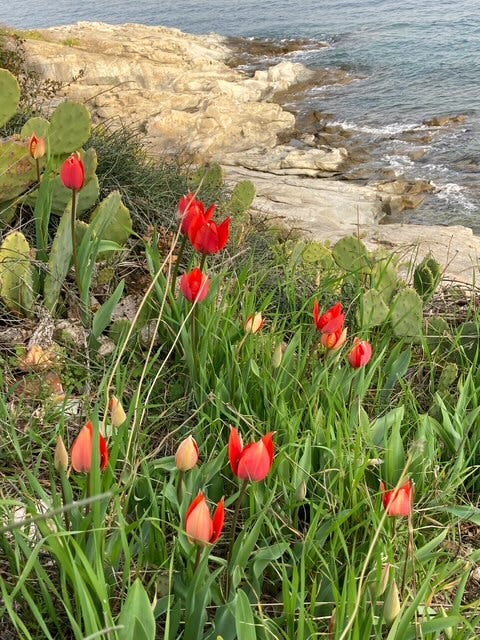
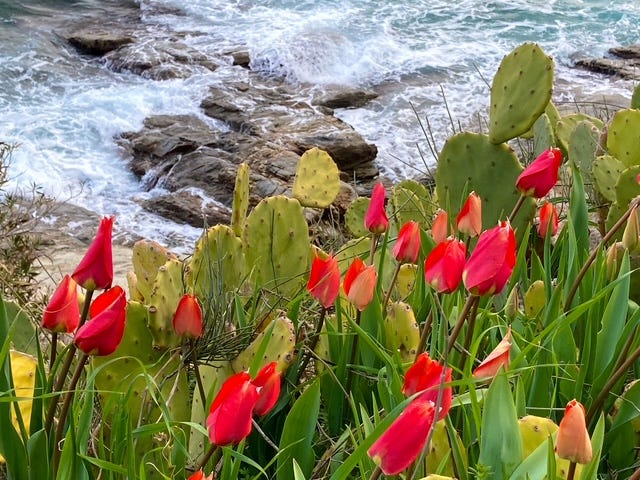
f
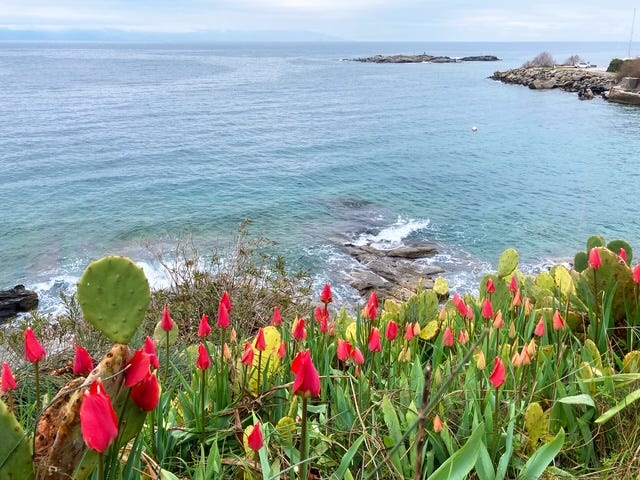
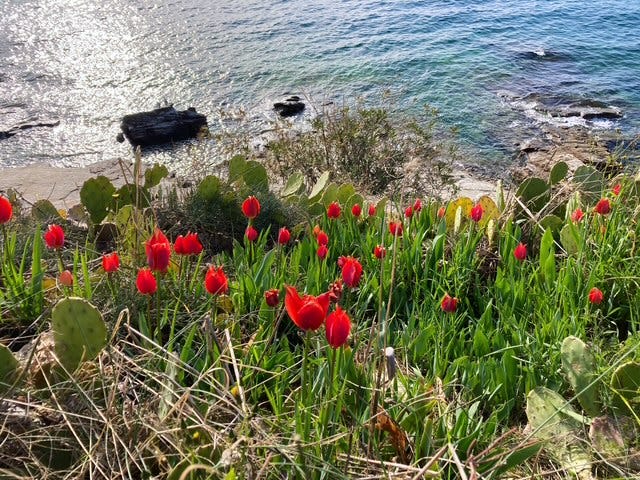
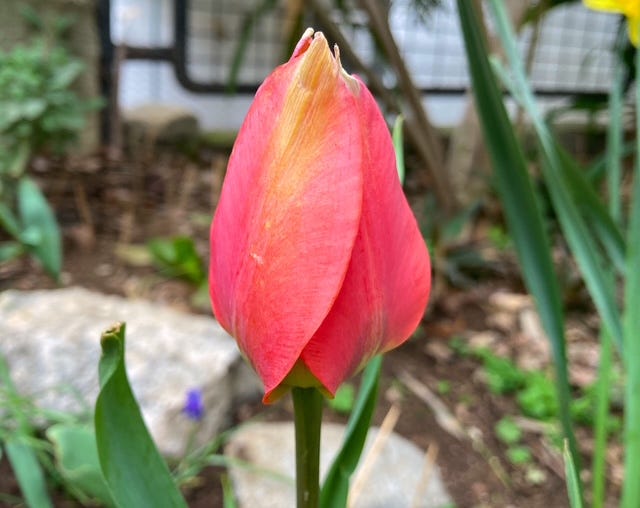
Hey! Listen to my brand new interview for the brilliant Post Growth Australia, a podcast I highly recommend. The interviewers have really taken the implications of my book Beyond The Petri Dish to another level.








Life will find a way….
Love this mystery.